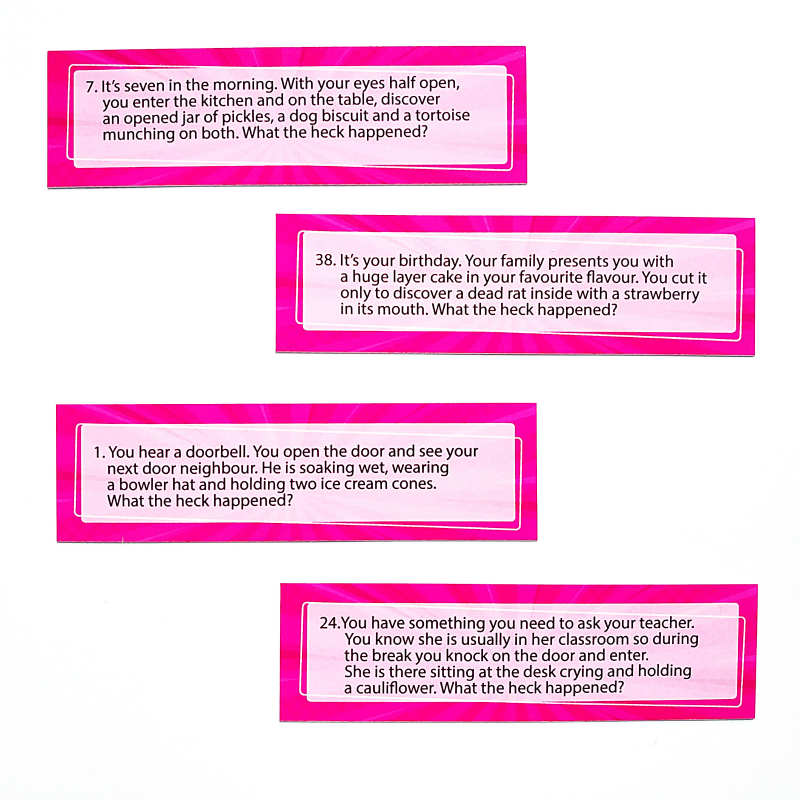Let’s Talk: What the Heck Happened? (review)
What’s your favourite teaching tool? Apps? Games? Flashcards? I must admit I don’t usually buy extra stuff, but once in a while my willpower proves to be particularly weak. Of course, it requires something extraordinary, but when I saw conversation cards created by Ewa Torebko, I simply knew I would love them.
And, of course, I do – that’s why I want to share some ideas on how to use them in your classroom.
You should know Ewa not only from the guest note she once wrote (check it here), but if you’re attending events by Edunation, you must know her as one of the best teacher trainers, full of creativity, ingenuity and a pretty wicked sense of humour. This time she cooperated with EIRU, a team creating useful teaching tools and famous for their conversation cards. To the variety of their conversation cards, Ewa added a tube of conversation starters called What the heck happened?
Although I believe you’ve already replaced “heck” with another word, haven’t you?
What you get in a tube is a set of 48 conversation starters that describe various situations, but invariably end up with the phrase What the heck happened?

How can you use them in your class? You can simply read out loud a card and ask your students to brainstorm the solution. It’s quite entertaining as there are no good/wrong answers – it’s a nice activity for both whole class, group and individual type of work, whichever you and your students find more enjoyable. My experience tells me to try this as a whole class activity and then encourage students to work in smaller groups.
It sounds pretty simple, yet I want to share three more activities that you can use to have fun with those cards:
Black Stories
You know the classic Black Stories where the riddle master reads the front of the card (the premise for the mystery) to the rest of the players. They must work together in order to try and solve the mystery. The players ask yes or no questions, and if the players ask questions that cannot be answered with a yes or no they must rephrase their question. If the players ask a question using a false assumption, the riddle master should tell them so. Finally, if the players are asking irrelevant questions or are going in the wrong direction, the riddle master can help the players get back on the right track. Black Stories, however, allow the riddle master to read the back of the card to to familiarize with the rest of the story.
You can adapt the rules of the game and divide your class into two teams. Each team prepares a story based on a card, and play the role of the riddle masters to the other group.
…and a body
Go big style and to each situation add a body. There’s nothing like a corpse to liven things up and transform a casual conversation into a murder mystery – especially when your students need to decide who the victim is.
I’d recommend this activity to people sharing some sort of black humour or simply loving crime stories. And teens, of course.
Wait, there’s a perfectly innocent explanation!
What if you teach a group of sensible, down-to-earth people, who don’t really fancy the imaginary world full of crimes, dangers and weird accidents? That’s simple – ask them to find a perfectly simple and innocent explanation to the whole situation. I mean, there has to be a simple explanation, right?
Right?
As you can see, there’s more than one way to enjoy the cards with your students. Naturally, the more advanced they are, the better stories you’ll get – but I believe both B1 and C2 students will have so much fun with What the heck happened?
Enjoy!
Disclaimer: this is not a sponsored post, I did not receive this product for review.










Leave a Reply
Want to join the discussion?Feel free to contribute!